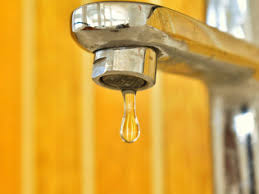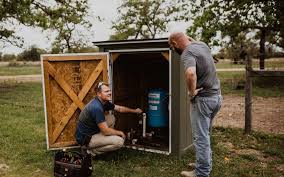Air Quality and Water Testing
Mold isn’t a bad word.Every home has mold
and without it the world wouldn’t be habitable for humans or animals. Mold only
becomes a problem when there is too much of it,when it causes problems for your
health,or when it is unsightly and causing damage to property.
This is where mold testing comes in.Take a
look at this simple guide to mold testing to determine if you need mold
testing,and what kind of testing best suits your needs
Residential inspection offers Air quality
testing and water testing. is a full service environmental analytical
laboratory, specializing in mold analysis, servicing home inspectors and mold
testing professionals nationwide
unique and distinguished by offering the
Mold|Safe Accuracy Guarantee, the only mold warranty in the country. The
Accuracy Guarantee covers up to $3,000 for remediation of any visible mold for
90 days after an inspection when the inspection report indicates no visible
mold or problematic mold counts in the air.
offers the long-sought after assurance by
home and mold inspectors that home buyers, home sellers, and real estate agents
can rely on to ensure they are getting a problem free property.

Well Water Testing
Prior to purchasing a home with a well,
it’s important to have the well tested to make sure it’s in good condition.
It’s also important to test the water that comes from the well to ensure it’s
safe for human consumption
Home Inspections can provide you with well
inspection services, including water quality testing services. We’ve been
providing people throughout the state with well water inspections for more than
a decade, and we have the experience it takes to spot potential problems during
well water testing and inspection.
The water well inspectors from Home Inspections
typically begin by performing load tests on a well. This helps us determine if
a well is experiencing any issues with regard to water pressure, water flow or
recovery. We’ll also examine the individual components within the well to
ensure they’re operating properly. Following the inspection, we can provide
suggestions for any repairs that might need to be made to the well, either now
or at some point in the future.

Water Quality Testing
If your family gets drinking water from a
private well, do you know if your water is safe to drink? What health risks
could you and your family face? Where can you go for help or advice? The EPA
regulates public water systems; it does not have the authority to regulate
private drinking water wells
Approximately 15% of Americans rely on
their own private drinking water supplies, and these supplies are not subject
to EPA standards, although some state and local governments do set rules to
protect users of these wells. Unlike public drinking water systems serving many
people, they do not have experts regularly checking the water’s source and its
quality before it is sent to the tap. These households must take special
precautions to ensure the protection and maintenance of their drinking water
supplies.
What does the testing cover?
Arsenic
Uranium
Coliform
E.Coli
Nitrates
Nitrites
pH
Chloride
Hardness
Copper
Iron
Manganese
Source Lead
Fluoride.
WATER ANALYSES INTERPRETATION GUIDE
Arsenic, Uranium, Coliform, E.Coli,
Nitrates, Nitrites, pH, Chloride, Hardness, Copper, Iron, Manganese, Source
Lead, Fluoride Water Testing.
Should I test my water quality?
When you make an offer to purchase a house
with a private well, perform a test to analyze water quality. Make your
contract contingent on obtaining the desired test results. Use a
state-certified laboratory, and if you are allowed to draw water samples
yourself, be sure to follow the instructions carefully.
The EPA recommends that you test well water
annually for nitrates and coliform bacteria, but the lab may suggest additional
tests important for your specific property or region
Such as:
Testing for pesticides if the home is built
on the site of an old orchard or farm.
Testing for volatile organic chemicals if
an oil tank is buried on the property, or if commercial storage tanks are
buried nearby.
Testing for lead if the home has lead
pipes.
Lead tests are important for homes with
public water, too, since contamination occurs after the water enters the
plumbing.
The results of your water tests might show
contaminants that are offensive, but not health risks. The lab can advise you
about the differences between that type of contaminant and dangerous
contaminants, and their possible sources. Don’t hesitate to ask as many
questions as it takes to answer all of your concerns.
Water Testing for Private Wells and Springs
Homes in different areas obtain water from
different sources: a home within the city limits may draw water from a
municipal source, while homes in rural areas often obtain water from a well or
spring. Water taken from a municipal system is usually monitored closely by the
municipality for various bacteria and contaminants. If the bacteria count
reaches a certain level due to spring runoff, heavy rains or a heat wave that
explodes the bacteria count, a “boil water advisory” is issued.
People in rural areas do not have the
luxury of continuous monitoring of their water source. Their water may be
contaminated in a number of ways: agricultural runoff can deliver pesticides,
nitrogen and coliform bacteria to their well, rodents may find their way into
the well or spring, or colonies of insects may set up camp in their water
source.
That depends upon several factors.
If the home will be financed with an FHA or
VA loan, the lender will most likely require a Standard Scan or an FHA Scan at
the very least. The FHA Scan tests for coliform, lead, nitrates and nitrites.
However, it may be best to order a more complete water test if you have any
concerns about nearby sources of water contamination
Ask yourself if you have any concerns about
the water source as it relates to it’s proximity to agricultural areas, major
highways that are heavily salted in winter, gas stations, industrial
facilities, landfills, and the home’s septic system. Water can become contaminated
with bacteria, e coli, and any number of heavy metals and industrial pollutants
if the water source is near any of these influences.
Another concern may be the material used in
the plumbing system of the home: some of the water distribution piping in the
home may be made of lead, which could contribute to elevated levels of lead in
the drinking water. Ask your home inspector to identify the plumbing materials
in the home, including the main water inlet, to determine if lead contamination
may be a concern.